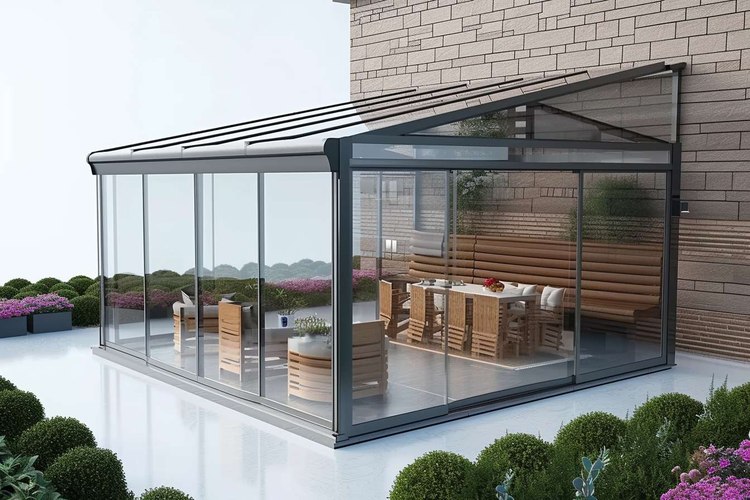The Ultimate Guide to Polycarbonate Sheets for Home and Garden Projects
Polycarbonate sheets have gained popularity in recent years as a versatile and durable material for various home and garden projects. From roofing to greenhouse construction, these lightweight yet strong panels offer numerous benefits for both DIY enthusiasts and professional builders. This comprehensive guide will explore the key aspects of using polycarbonate sheets, their applications in residential builds, how they compare to traditional materials, and tips for selecting the right type for your project.

What are the benefits of using polycarbonate roofing sheets?
Polycarbonate roofing sheets offer several advantages that make them an attractive option for home and garden projects. Firstly, they are incredibly lightweight, making them easy to handle and install. Despite their low weight, polycarbonate sheets are highly impact-resistant, capable of withstanding harsh weather conditions, including hail and strong winds. They also provide excellent insulation properties, helping to regulate temperature and reduce energy costs.
Another significant benefit is their versatility in terms of light transmission. Polycarbonate sheets are available in various transparency levels, from clear to tinted or even opaque, allowing you to control the amount of light that enters your space. This feature makes them ideal for applications ranging from sunrooms to carports.
What are common applications for polycarbonate roof panels?
Polycarbonate roof panels have found their way into numerous residential applications due to their unique properties. One of the most popular uses is in the construction of conservatories and sunrooms. The sheets allow natural light to flood the space while providing protection from UV rays and maintaining a comfortable indoor temperature.
Greenhouses and garden structures are another common application. Polycarbonate panels create an ideal environment for plant growth by allowing sufficient light penetration while offering better insulation than traditional glass. They are also frequently used for patio covers, carports, and pergolas, providing shelter from the elements without completely blocking out natural light.
In addition, polycarbonate sheets are often utilized for skylights and roof windows, bringing natural light into interior spaces that might otherwise be dark or require artificial lighting during the day.
How do polycarbonate sheets compare to glass or metal roofing?
When compared to traditional roofing materials like glass or metal, polycarbonate sheets offer several distinct advantages. In terms of weight, polycarbonate is significantly lighter than both glass and metal, making it easier to transport and install. This characteristic also puts less stress on the supporting structure, which can be particularly beneficial for retrofit projects.
In terms of durability, polycarbonate sheets outperform glass in impact resistance. They are virtually unbreakable, which makes them a safer option, especially in areas prone to severe weather or falling debris. While metal roofing is also highly durable, it can be prone to denting and may require more maintenance over time.
Insulation is another area where polycarbonate sheets excel. They provide better thermal insulation than single-pane glass and most metal roofing options, helping to maintain a more stable indoor temperature and potentially reducing energy costs.
However, it’s worth noting that glass typically offers superior clarity and a longer lifespan if properly maintained. Metal roofing, on the other hand, may be preferred for its traditional aesthetic and fire-resistant properties in certain applications.
What thickness of polycarbonate sheet is best for roofing?
Choosing the right thickness for your polycarbonate roofing sheet is crucial for ensuring optimal performance and longevity. The thickness you select will depend on several factors, including the specific application, climate conditions, and desired level of durability.
For most residential roofing applications, sheets ranging from 6mm to 16mm thick are commonly used. Here’s a general guide:
-
6mm: Suitable for basic shelters, small greenhouses, or areas with minimal snow load
-
8mm-10mm: Ideal for most residential applications, including conservatories and patio covers
-
12mm-16mm: Recommended for larger structures or areas with heavy snow loads
It’s important to note that thicker sheets generally offer better insulation and impact resistance but are also more expensive and slightly less light-transmitting. Consulting with a professional or referring to local building codes can help ensure you choose the appropriate thickness for your specific project.
What types of polycarbonate sheets are available for roofing?
Polycarbonate sheets come in various types, each suited for different applications and aesthetic preferences. The most common types include:
-
Solid Polycarbonate Sheets: These are flat, uniform sheets that offer high impact resistance and clarity. They’re ideal for applications where maximum light transmission is desired.
-
Multiwall Polycarbonate Sheets: These feature internal chambers or ribs that provide additional insulation and strength while reducing weight. They’re popular for greenhouse and conservatory roofing.
-
Corrugated Polycarbonate Sheets: These have a wavy profile that adds structural strength and allows for overlapping installation. They’re often used for industrial roofing or simple outdoor structures.
-
Textured Polycarbonate Sheets: These have a surface texture that diffuses light and reduces glare. They’re useful for applications where softer, more even lighting is preferred.
-
Tinted or Colored Polycarbonate Sheets: Available in various colors, these can be used to control light transmission or for decorative purposes.
When selecting the type of polycarbonate sheet for your project, consider factors such as the desired aesthetics, light transmission requirements, insulation needs, and the overall structure of your building.
In conclusion, polycarbonate sheets offer a versatile and practical solution for a wide range of home and garden projects. Their unique combination of lightweight construction, durability, and thermal properties makes them an attractive alternative to traditional roofing materials. By understanding the different types available and considering factors such as thickness and application, you can choose the right polycarbonate sheet to meet your specific needs and enhance your living space.




